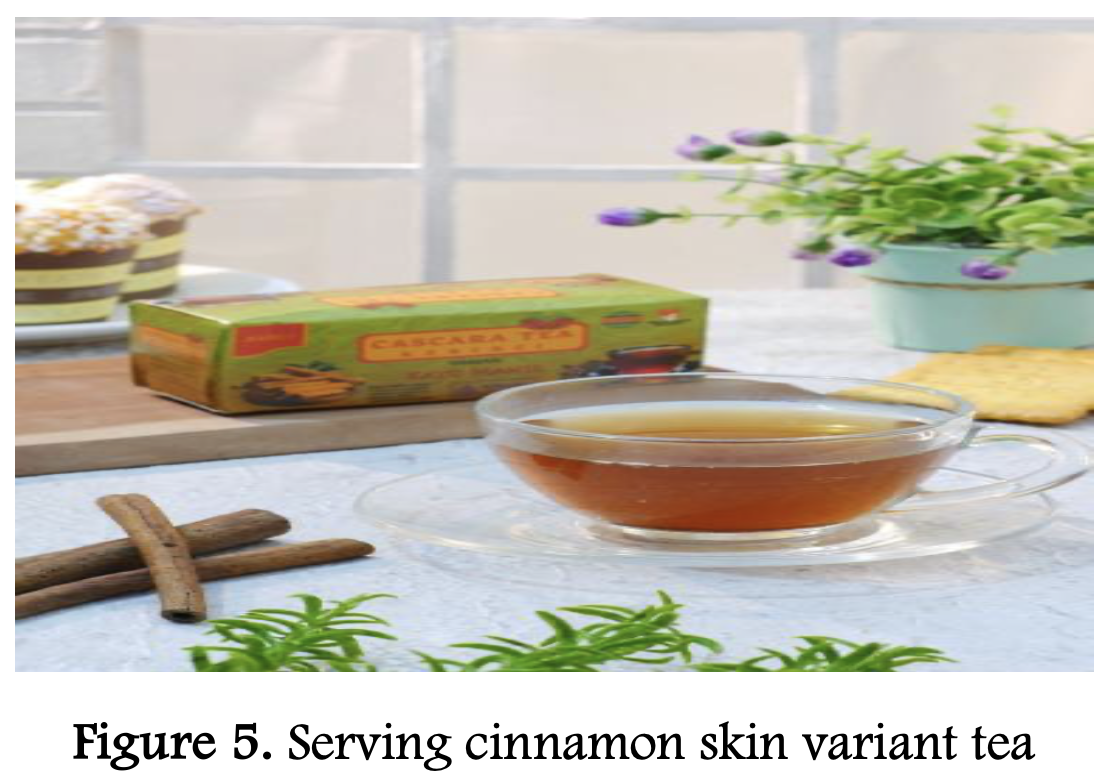Transforming of Indigenous Knowledge into Scientific Knowledge: An Ethnoscientific Study of Cascara Tea in Kerinci
Main Article Content
Abstract
The indigenous biological knowledge of ethnic communities such as Kerinci has the potential to be a scientific source in biology learning through an ethnoscience approach. This study aims to reconstruct the local knowledge of the Kerinci community about the processing of coffee skin waste into cascara tea, transform it into scientific knowledge, and explore its potential as a medium for biology learning. The method used is descriptive qualitative, the research informants are cascara tea UMKM actors consisting of 2 people. Data were obtained through interviews, observations, and documentation, then analyzed into scientific concepts. The results show that the cascara processing process consists of sorting, roasting, grinding, packaging, serving, and flavor variations. This study proves that indigenous knowledge can be developed into contextual biological concepts and integrated into biology learning to improve students' scientific literacy and strengthen the relationship between culture, science, and the environment.
Article Details

This work is licensed under a Creative Commons Attribution-ShareAlike 4.0 International License.
References
Ariyanto, K., Nurhanida, A., Purba, F. A. T., & Gisavana, F. (2022). Pemberdayaan Ibu Rumah Tangga Melalui Potensi Limbah Kulit Kopi Robusta. 1(1), 68–82.
Aryadi, M. I., Arfi, F., & Harahap, M. R. (2020). Perbandingan kadar kafein dalam kopi robusta, kopi arabika, dan kopi liberika dengan metode spektrofotometri uv-vis. Amina, 2(2), 64–70.
Creswell, John, W. (2021). Reseach design pendekatan metode kualitatif, kuantitatif dan campuran edisi keempat (empat). Pustaka Pelajar.
Denzin, K, Norman., & Lincoln, S, Y. (2009). Handbook of Qualitatif Reseach. Pustaka Pelajar.
Djami, M. B. (2020). Ngopi: Memaknai Aktivitas Minum Kopi Dalam Konteks Budaya Populer. SOLA GRATIA: Jurnal Teologi Biblika Dan Praktika, 1(1), 82–98. https://doi.org/10.47596/solagratia.v1i1.113
Edowai, D. N., & Tahoba, A. E. (2018). Proses Produksi dan Uji Mutu Bubuk Kopi Arabika (Coffea arabica L) Asal Kabupaten Dogiyai, Papua. Agriovet, 1(1), 1–18.
Fibrianto, K., & Ramanda, M. P. A. D. (2018). Perbedaan Ukuran Partikel Dan Teknik Penyeduhan Kopi Terhadap Persepsi Multisensoris: Tinjauan Pustaka. Jurnal Pangan Dan Agroindustri, 6(1), 12–16. https://doi.org/10.21776/ub.jpa.2018.006.01.2
Garis, P., Romalasari, A., & Purwasih, R. (2019). Pemanfaatan Limbah Kulit Kopi Cascara Menjadi Teh Celup. Industrial Research Workshop and National Seminar, 279–285.
Indrayani, N. M. K., Sunaryono, J. G., & Purwanti, E. W. (2022). Analisis Nilai Tambah Kulit Kopi Arabika (Coffea Arabica) Sebagai Produk Olahan Teh Celup Cascara Di Desa Taji Kecamatan Jabung Kabupaten Malang. Jurnal Pengolahan Pangan, 7(2), 67–74. https://doi.org/10.31970/pangan.v7i2.77
Journal, C. D., Bahri, K. N., Banurea, N. N., & Media, S. (2024). Optimalisasi Branding Dan Social Media Instagram Dalam Rangka Menunjang Kewirausahaan Mandiri. 5(1), 1686–1690.
Kurniawati, D., Amelia, D., & Rani, D. (2022). Pemberian Serbuk Kulit Kayu Manis Terhadap Kadar Glukosa Darah Lansia Dengan Diabetes Mellitus. Jurnal Kesehatan Mercusuar, 5(1), 1–5. https://doi.org/10.36984/jkm.v5i1.211
Lamefa, D. Y., Sukardi, S., & Raharja, S. (2020). Strategi Pengembangan Agroindustri Kopi di Kabupaten Kerinci. Jurnal Agro Industri Perkebunan, 8(2), 85–98. https://doi.org/10.25181/jaip.v8i2.1480
Lilmutawakkil, I., Hapsari, N., Susanto, A., Febriyono, W., Raya, J., Km, P., Paguyangan, K., & Brebes, K. (2023). Arabica Coffee ( Coffea arabica L .) Development Strategy in Dawuhan Village , Sirampog District , Brebes Regency Program Studi Agribisnis , Fakultas Sains dan Teknologi , Universitas Peradaban Jurnal Pertanian Peradaban ( ISSN 2807-6974 ). Jurnal Pertanian Peradaban (ISSN 2807-6974) Vol., 03(02).
Mierza, V., Aenah, N., Nurlaela, Fransiska, A. N., Malik, L. H., & Wulanbirru, P. (2023). Literature Review: Analisis Kadar Kafein Menggunakan Metode Spektrofotometri Uv-Vis. Jurnal Farmasetis, 12(1), 21–26.
Nafisah, D., & Widyaningsih, T. D. (2018). Kajian Metode Pengeringan Dan Rasio Penyeduhan Pada Proses Pembuatan Teh Cascara Kopi Arabika (Coffea arabika L.). Jurnal Pangan Dan Agroindustri, 6(3), 37–47. https://doi.org/10.21776/ub.jpa.2018.006.03.5
Nalurita, I., Naufali, M. N., Herdiyanti, R., Karni, I., & Isnain, F. S. (2023). Pengolahan Limbah Kulit Kopi Menjadi Teh Herbal Cascara Celup Guna Meningkatkan Pendapatan Kelompok Wanita Tani Elong Tuna. Jurnal Mengabdi Dari Hati, 2(2), 93–98. https://journal.mudaberkarya.id/index.php/JMH/article/view/51
Nofrian Utama putra. (2023). Analisis Peramalan Produksi , Konsumsi , Dan Analisis Peramalan Produksi , Konsumsi , Dan Ekspor Kopi Di Indonesia Tahun 2023-2033. Skripsi, 1–104.
Nur, Y., Cahyotomo, A., Nanda, N., & Fistoro, N. (2020). Profil GC-MS Senyawa Metabolit Sekunder dari Jahe Merah (Zingiber officinale) dengan Metode Ekstraksi Etil Asetat, Etanol dan Destilasi. Jurnal Sains Dan Kesehatan, 2(3), 198–204. https://doi.org/10.25026/jsk.v2i3.115
Rahayu, W. E., Purwasih, R., & Hidayat, D. (2020). Pengaruh penambahan sari nanas terhadap karakteristik kimia dan sensori minuman teh cascara. Teknologi Pangan : Media Informasi Dan Komunikasi Ilmiah Teknologi Pertanian, 11(2), 144–151. https://doi.org/10.35891/tp.v11i2.1900
Rikizaputra, R., Festiyed, F., Diliarosta, S., & Firda, A. (2021). Pengetahuan Etnosains Guru Biologi di SMA Negeri Kota Pekanbaru. Journal of Natural Science and Integration, 4(2), 186. https://doi.org/10.24014/jnsi.v4i2.14257
Rondang Tambun, Harry P. Limbong, Christika Pinem, & Ester Manurung. (2017). Pengaruh Ukuran Partikel, Waktu Dan Suhu Pada Ekstraksi Fenol Dari Lengkuas Merah. Jurnal Teknik Kimia USU, 5(4), 53–56. https://doi.org/10.32734/jtk.v5i4.1555
Setiyono, S., Arum, A. P., SM, S. B. P., Savitri, D. A., Andrean, F. F., & Putri, Z. S. (2023). Pelatihan Pengolahan Limbah Kopi Sebagai Teh Cascara Dan Produk Kerajinan. JMM (Jurnal Masyarakat Mandiri), 7(1), 607. https://doi.org/10.31764/jmm.v7i1.12403
Sudantha, I. M., Sahlan, M., & Winanti, B. D. S. (2019). Upaya Meningkatkan Kualitas Kopi Dengan Menggunakan Mesin Roasting Kopi Bersama Petani Kopi di Desa Aik Berik Kecamatan Batukliang Utara. Prosiding PEPADU, 1(September), 233–236. http://jurnal.lppm.unram.ac.id/index.php/prosidingpepadu/article/view/37
Sugiyono. (2017). metode penelitian kuantitatif, kualitatif dan R&D. Alfabeta.
Suma, N. N., & Ulfa, N. M. (2023). Kue Kopi ( Ku-Kopi ) Sebagai Produk Alternatif Olahan Kopi Berbasis Potensi Geoekonomi. Riau Journ. https://doi.org/10.31258/raje.6.3.192-205
Syaiful, A. Z., Hermawati, & Sonda, M. (2022). Pengaruh Lama Pengaktifan Ragi Untuk Fermentasi Kulit Kopi Arabika Menjadi Bioetanol. Saintis, 3(2), 37–49.
Wijayanti, R. B., Novita, I., Aisyah, R., & Risanti, E. D. (2021). Hubungan Kadar Vitamin D dan Penurunan Kadar Glukosa Darah Penderita Diabetes Mellitus. Proceeding of The URECOL, 2014(1), 532–542.

